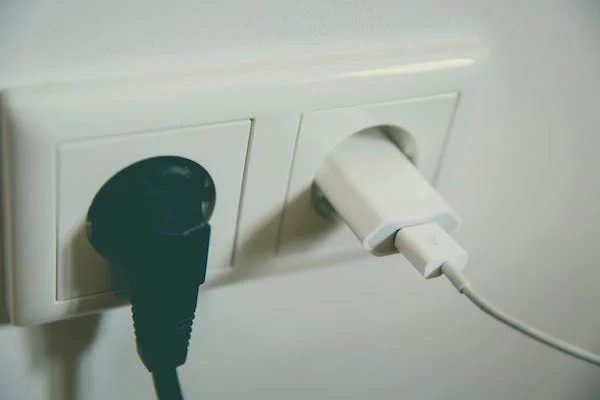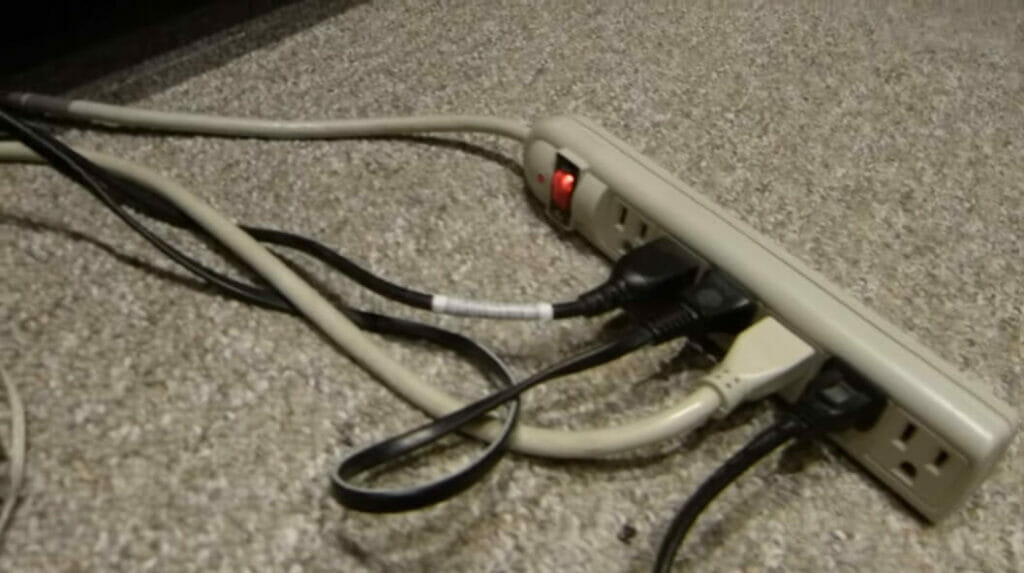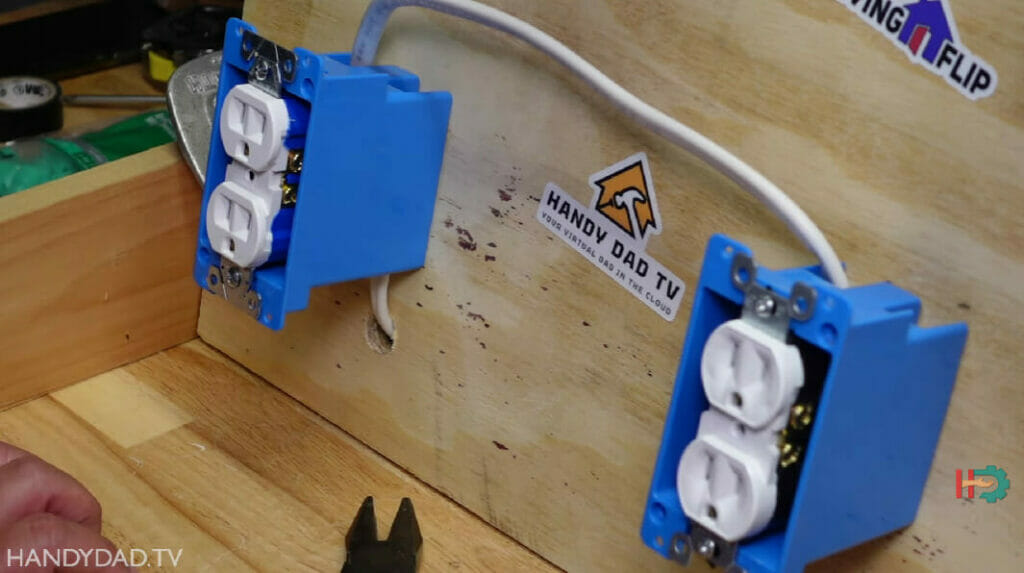How Many Things Can I Plug Into One Outlet (Essential Tips Guide)

Ever wondered how much you can plug into a single outlet without causing electrical havoc? I had the same question not too long ago! So, let’s dive into it together and clear up some confusion.
When it comes to plugging in devices, you should know a rule of thumb: it’s safest to stick to a maximum load of 1,500 watts per outlet or circuit. Now, of course, the number of items you can plug into one outlet depends on the wattage of each device or appliance.
But don’t worry; we’ll dive deeper into how the wattage of each device affects this and what you should be cautious about to ensure electrical safety.
Outlet Capacity

Understanding Amperage and Wattage
You probably heard that outlets have ratings expressed in amps, like 15 or 20 amps. This amp rating tells you how much current the outlet can handle safely.
When you go over the limit, you risk an overload, which can be dangerous.
Here’s a quick way to figure out how much an outlet can handle:
- 15-amp circuit: 15 amps x 120 volts = 1,800 watts
- 20-amp circuit: 20 amps x 120 volts = 2,400 watts
Remember these numbers since they will help you avoid overloading your outlets.
Maximum Load Capacity for Common Household Outlets
| Outlet Type | Maximum Load Capacity | Voltage | Recommended Devices |
|---|---|---|---|
| Standard | 15 Amps | 120V | Lamps, phone chargers, small appliances, laptops, audio equipment |
| GFCI | 15 Amps | 120V | Bathroom outlets, kitchen outlets, outdoor outlets |
| AFCI | 15 Amps | 120V | Bedroom outlets, living room outlets |
| High-Amperage | 20 Amps | 120V | Power tools, heavy-duty appliances |
It’s important to consult local electrical codes and regulations for accurate and up-to-date information about your region.
Additionally, certain appliances and devices may have specific power requirements that must be considered.
To ensure electrical safety and prevent overloading, it is recommended to determine your outlet’s capacity.
Determining Your Outlet’s Capacity
Let’s now dive into how to figure out your outlet’s capacity. We’ll start by looking at circuit breakers and fuses and then move on to calculating the total wattage.
Circuit Breakers and Fuses

Breakers and fuses are your home’s electrical safety nets. They help protect your house from potential hazards by limiting the flow of electricity. Most homes have either:
- 15-amp circuits
- 20-amp circuits
For safety, let’s assume your home has 15-amp circuits unless you know otherwise. And if you’re unsure, it’s always best to call an electrician to check.
Calculating Total Wattage
Calculating the total wattage of all the devices you’ll connect is the easiest way to figure out how much stuff you can plug into one outlet. Here’s how:
- Check each device’s power rating (usually printed on the device or manual).
- Add up the wattage of all your devices.
For a quick example, if I have 3 devices:
- Laptop: 100 watts
- Phone charger: 10 watts
- Desk lamp: 60 watts
Total: 170 watts
3. Compare the total wattage to the capacity of your circuit.
- 15-amp circuit: 1,800 watts
- 20-amp circuit: 2,400 watts
Good news: 170 watts is safe for either a 15 or 20-amp circuit
As a rule, try not to use more than 80% of your circuit’s capacity. Furthermore, it’s best to consult a professional electrician when in doubt.
Factors to Consider Before Plugging Devices

Consider the type of devices you’re plugging in. Some devices—like space heaters or hairdryers—can draw a lot of power, so it’s best to limit how many of these high-drawing devices you use simultaneously.
In general, follow these guidelines:
- Stick to smaller, lower-wattage electronics for everyday use
- Be cautious with high-wattage appliances, and try to plug them in separately or on different circuits
- Always check the device’s label for its power requirements
And remember, it’s not all about wattage—some devices don’t play well together!
Mixing a bunch of chargers with motors or dimmer switches can cause interference, so spread those out and ensure they’re not all crammed into one spot.
So there you have it! Keep those factors in mind, and you’ll make sure your outlets stay safe and functional.
How to Safely Increase Outlet Capacity
Upgrade to a Higher-Amperage Circuit

When working on a project, I always want to ensure I have enough power to plug in all my devices and appliances safely.
One way to do that is to upgrade your home’s circuits to a higher amperage, which increases the maximum load for each circuit or outlet.
Most outlets can handle up to 15 amps of current, but upgrading to a 20-amp circuit can give me more wiggle room.
I wouldn’t recommend tackling this project independently unless you’re an experienced electrician because it involves working with live electrical wires.
So, if you’re considering an upgrade, call a professional to get the job done safely.
Add Additional Outlets

If upgrading the circuit isn’t an option, or if you need more outlets in a specific area, you can always add more outlets.
This helps you spread out the power load more evenly and reduces the risk of tripping a breaker or overloading a single outlet.
One option to create more outlets in a room is to install a power strip or surge protector.
This allows you to plug multiple devices into one outlet without risking an overload as long as you stay within the maximum wattage of the circuit.
Another option is to have new wall outlets installed. This requires a bit more work and expertise, so calling in an electrician to handle the job is recommended.
They’ll make sure everything’s up to code and installed safely.
Wrapping Up
It’s important to remember that the number of things you can plug into one outlet depends on the wattage of the appliances or devices.
Generally, it’s safest to stick to a maximum load of 1,500 watts per outlet or circuit. Remember, safety comes first!
Keeping track of the wattage requirements for each device prevents overloading the outlet and helps save energy and simplify power management in your home.
References
Organizations:
- National Electrical Manufacturers Association (NEMA) – https://www.nema.org/
- Institute of Electrical and Electronics Engineers (IEEE) – https://www.ieee.org/
- Electrical Safety Foundation International (ESFI) – https://www.esfi.org/
Books:
- “Electrical Wiring Commercial” by Ray C. Mullin and Phil Simmons
- “Electrical Safety: Systems, Sustainability, and Stewardship” by Martha J. Boss, Gayle Nicoll
- “Electrical Safety Handbook” by John Cadick
Video References
Electrician U
theoverengineer
Silver Cymbal
HandyDadTV
